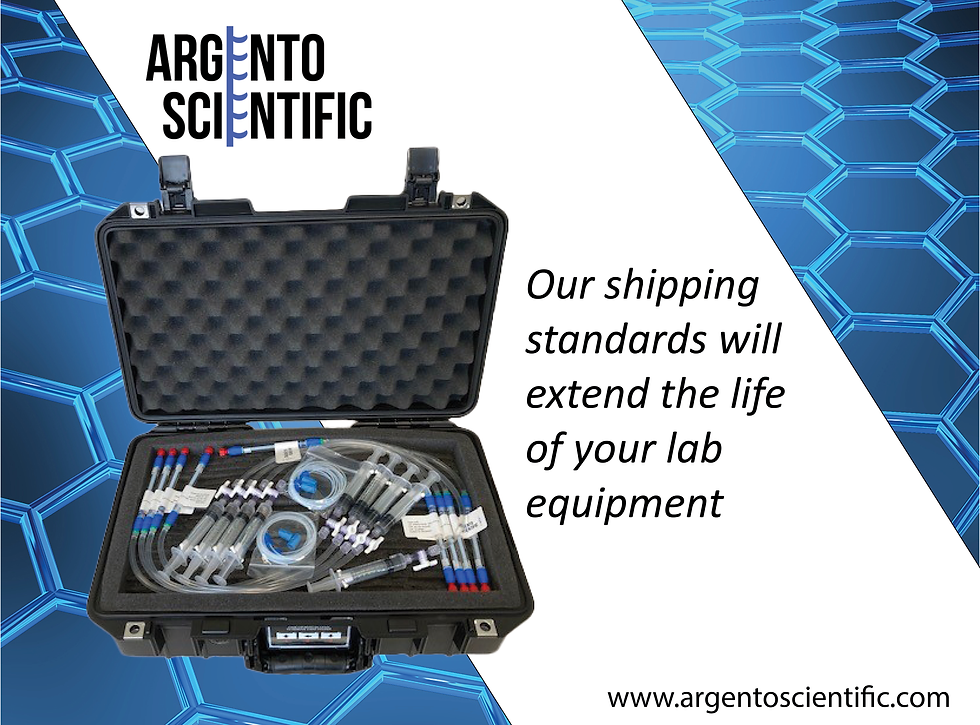Not all Columns are Created Equal
- adrian6524
- Feb 28, 2023
- 4 min read
Updated: Feb 28, 2023
Glass columns are engineered reaction vessels, and like other engineered products, different column designs optimize for different attributes; inertness vs. strength vs. cost etc. Depending on how they’re made, columns can affect separation results and the time it takes to set up and run experiments. Here are some features to keep in mind when evaluating glass columns:
Inertness
It’s important that columns don’t react with the chemicals inside them since that would affect analysis. Also, some of the cleaning agents used, like sodium hydroxide, are corrosive so columns have to stand up to them. The two main wetted materials in glass columns are the endpieces and the glass tubes. The endpieces are usually made of thermoplastics like PTFE or PEEK. PTFE is very inert but also soft so it has to be reinforced by nearby materials in order to withstand pressure in the column. PEEK as an endpiece material is harder than PTFE which is good for structural purposes, but it’s not as inert as PTFE and is also more expensive. Cytiva XK columns use glass filled polypropylene. This material is tough and cheap, but not very inert. (See table)
The other main wetted material in glass columns is the glass. Maintaining tight seals is important in columns, including when the columns experiences swings in temperature, so glass with a low coefficient of thermal expansion is necessary. Borosilicate glass meets this need as well as being highly inert.
All of this leaves two places in columns where chemicals might cause trouble; the o-rings and the frits. Frits usually come in PTFE, high density polyethylene (HDPE) and 316 stainless steel (SS). These materials offer tradeoffs with hydrophobicity, compressibility and inertness and are a topic unto themselves. HDPE generally works well for protein purification applications.
O-rings may be the one place most subject to mischief in columns. O-rings are usually made from Viton™ which is inert, but not as much as other parts of the column. Other o-ring materials are sometimes available as an option like EPDM.

Pressure Rating
The challenge with pressure ratings for bench-scale columns is holding them together.
Column designs take two main approaches to this: columns that clamp themselves together using an exterior plastic tube (Cytiva, Waters) and those that attach the endpieces directly to the central glass tube (Omnifit, Astrea Bioseparations). The exterior-tube design adds parts and therefore cost. Also, you might think that this bulkier design makes the column stronger, but some exterior tube columns have lower pressure ratings. Single tube columns attach the endpieces directly to the glass tube. This requires either cutting features into the glass that the endpieces hold on to (Omnifit), or flaring the glass at the ends for the same purpose (Astrea). Single tube columns are also easier to see into since they don’t have an outside tube blocking some of the light and making reflections.
Flow Characteristics
Ideally, the mobile phase entering the column would flow in a smooth, laminar pattern without any fluid hanging up along the way. Unfortunately some fluid always does hang up
producing dead volume that bleeds slowly into the main flow. Column designs try to minimize this problem by using disbursal patterns cut into the endpieces that distribute the flow more evenly over frits. This works less effectively the wider the column diameter is.
O-rings can also cause carryover. Normally o-rings act as a seal for the endpiece. In doing so they create a small gap between the endpiece and the glass can allow fluid to hide. Some columns, like Omnifit columns that use PTFE endpieces, fill this space with the PTFE. This design takes advantage of PTFE’s softness to act as a primary seal, before any liquid can reach the o-ring.

Another dead volume consideration is the tubes connecting to the column. The diameter of the channel through the endpiece and the inner diameter of the tubing should match. If they don’t, some fluid will hang up at the junction between the two. The concentricity and straightness of the tube at this junction also affect the amount of dead volume present. Misalignments produce tiny void areas for fluid to hide.
Ease-of-Use
More inert materials like PTFE and borosilicate glass give the user more leeway in what
chemicals, particularly cleaning agents, can be used with a column. Exterior-tube columns are harder to take apart than single tube columns since they have more components. Also, connecting to exterior-tube columns is more complicated. Some of the exterior-tube designs don’t capture the column frits securely so they can fall out on the top of the resin bed are hard to pick up. Finally the single-tube
columns hold more pressure, at least compared to Cytiva XK columns, so they are less likely to crack.
Cost
The cost of the column by itself is usually small compared to the costs of the resins, the mobile phase and most of all the time spent running the experiment. All of these other costs encourage people to use the most robust columns available and not worry as much about the direct column cost. That said, glass columns for bench scale protein purification can differ by up to a factor of two on cost. The single-tube columns win in the category of cost as well as the other features discussed – inertness, pressure rating, flow characteristics and ease of use.





Comments